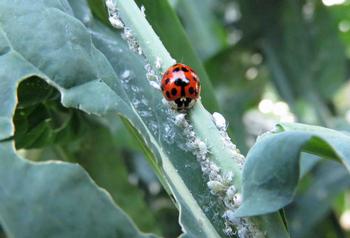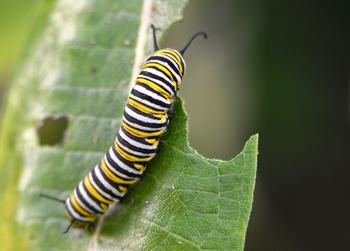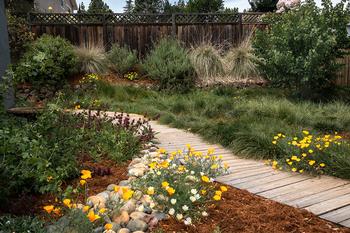Want to help the Earth? Think small.
-
Marie Narlock
-
Imagine a world without insects. No creepy-crawlies. No cooties. Nothing to swat at barbecues, smoosh at picnics, or scrape off windshields. A pest-free existence! Ah, the sweet life sans fly swatter. Sounds terrific, right?
 Lady beetles can consume thousands of aphids. Photo: J. Alosi
Lady beetles can consume thousands of aphids. Photo: J. AlosiWrong.
If insects disappeared, humans would be doomed.
The food webs that support amphibians, reptiles, birds, and us mammals would collapse. Most flowering plants would go extinct, which is a problem if you enjoy eating. While we starved, piles of detritus would build up like heaps of rotting trash. Our planet would turn dystopian without bees, caterpillars, ants, beetles, butterflies, moths, flies and all the rest.
That’s because insects are the farmers, garbagemen, and, ironically, the exterminators of the natural world. As the esteemed biologist E.O. Wilson put it, they are “the little things that run the world.”
Insects pollinate the flowers that become the food we eat and that keep our surroundings colorful and compelling. When other living things die, insects are part of the clean-up crew, the decomposers of organic matter that keeps soil healthy.
But what about problem insects like aphids and mosquitoes? Turns out less than one percent of insects are harmful. And the other 99% can help keep the bad guys in check. For instance, one dragonfly can eat hundreds of mosquitoes in a day, ladybugs gorge on aphids, and lacewings snack on mites. When they're eaten, caterpillars provide more energy from plants to other animals than any other insect. Photo: jjjjcp56, Flickr
When they're eaten, caterpillars provide more energy from plants to other animals than any other insect. Photo: jjjjcp56, FlickrInsects are also food for larger critters and key indicators of healthy streams and soils. Biologists call all their important functions “ecosystem services.” That translates to $57 billion worth of services for you and me -- for global biodiversity, food security, and human livelihood.
Insects also possess some supernatural talents. Ants can lift and carry fifty times their weight. Many beetles have built-in antifreeze proteins that enable them to survive winter temperatures. A dragonfly’s head is mostly eye, allowing it to see all angles except behind. A male moth can smell a female seven miles away and uses the moon to navigate at night.
Tiny insects, big decline
There are more than a million species of insects, comprising 80% of all animals on Earth. Sadly, insect populations are declining around the world and many are endangered. This is due to habitat loss, pesticide use, loss of native plants due to an increase in exotic and invasive species, light pollution, and, of course, climate change.
Depressing as this sounds, we can make an immediate impact with just a few small changes.
Turn your garden into an insect resort When you grow California native plants, you naturally attract the insects that co-evolved with them. Photo: Vicki Anderson
When you grow California native plants, you naturally attract the insects that co-evolved with them. Photo: Vicki AndersonTo boost insect populations, you’ll need to make your landscape enticing and comfy for these small but mighty creatures.
First step? Grow the native plants that many insects need to survive. These are the plants that were here long before we were and that co-evolved with insects.
In his seminal work, entomologist Dr. Doug Tallamy recommends our native keystone species – the plants with the greatest ability to support the food web. Growing these plants can make a huge difference. As a point of comparison, one native California oak tree supports hundreds of caterpillars while one eucalyptus tree only supports five.
In addition to oaks, California’s keystone species include cherry (Prunus), lilac (Ceanothus), currant (Ribes), maple (Acer), lupine (Lupinus), manzanita (Arctostaphylos), sage (Salvia), and goldenrod (Solidago).
Don’t forget to tuck in some non-native favorites like herbs and sunflowers to keep pollinators singing. While you’re at it, put out a shallow dish of water so buzzing passersby can grab a sip on the fly. Bonus points for replacing your lawn with a menagerie of insect-loving plants and leaving an area of bare soil to invite ground-nesting bees.
Next up? Turn off your outdoor lights at night by adding timers or motion sensors. Light pollution messes with insect courtship, foraging, and navigation. You don’t want to be responsible for interrupting an insect love affair, do you?
Finally, avoid pesticides. Instead, use problem-solving strategies that protect and respect garden life – even its smallest inhabitants.



